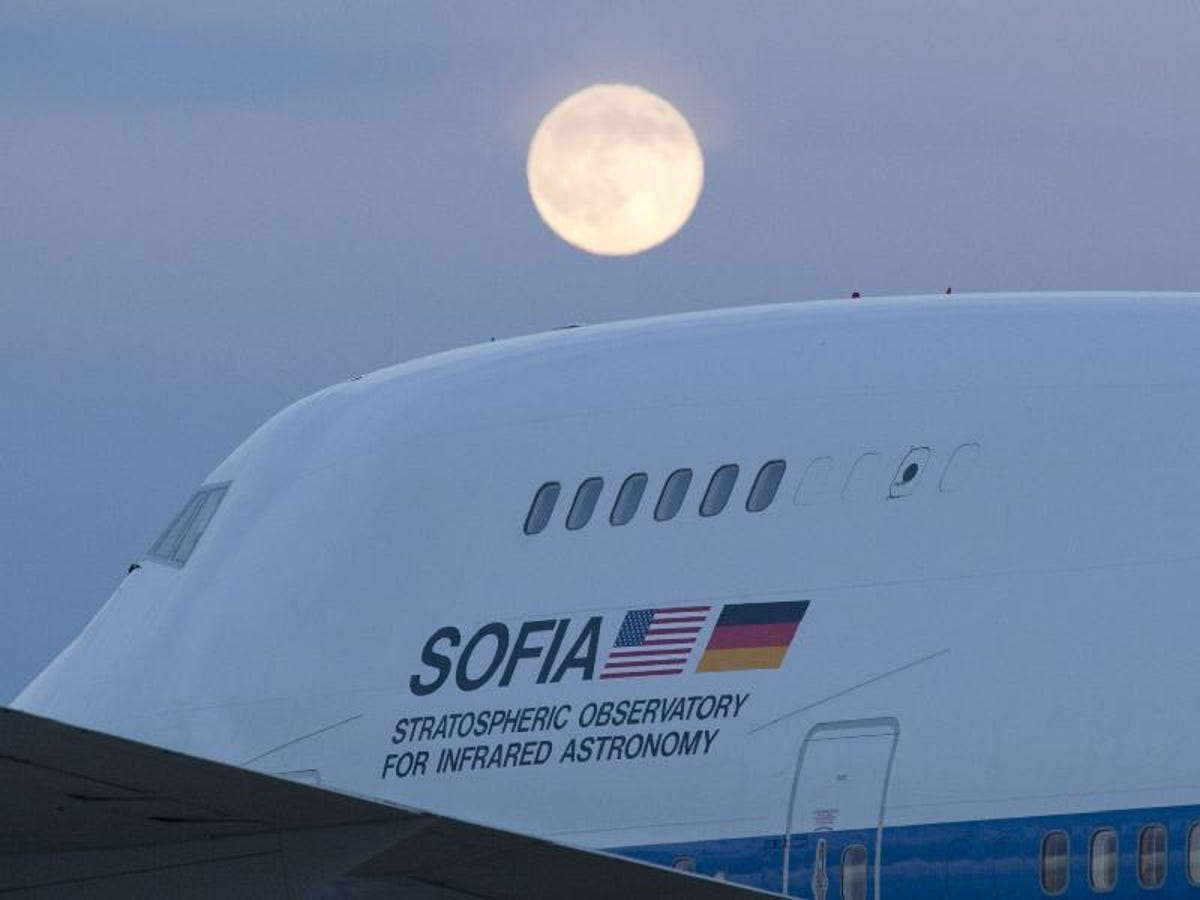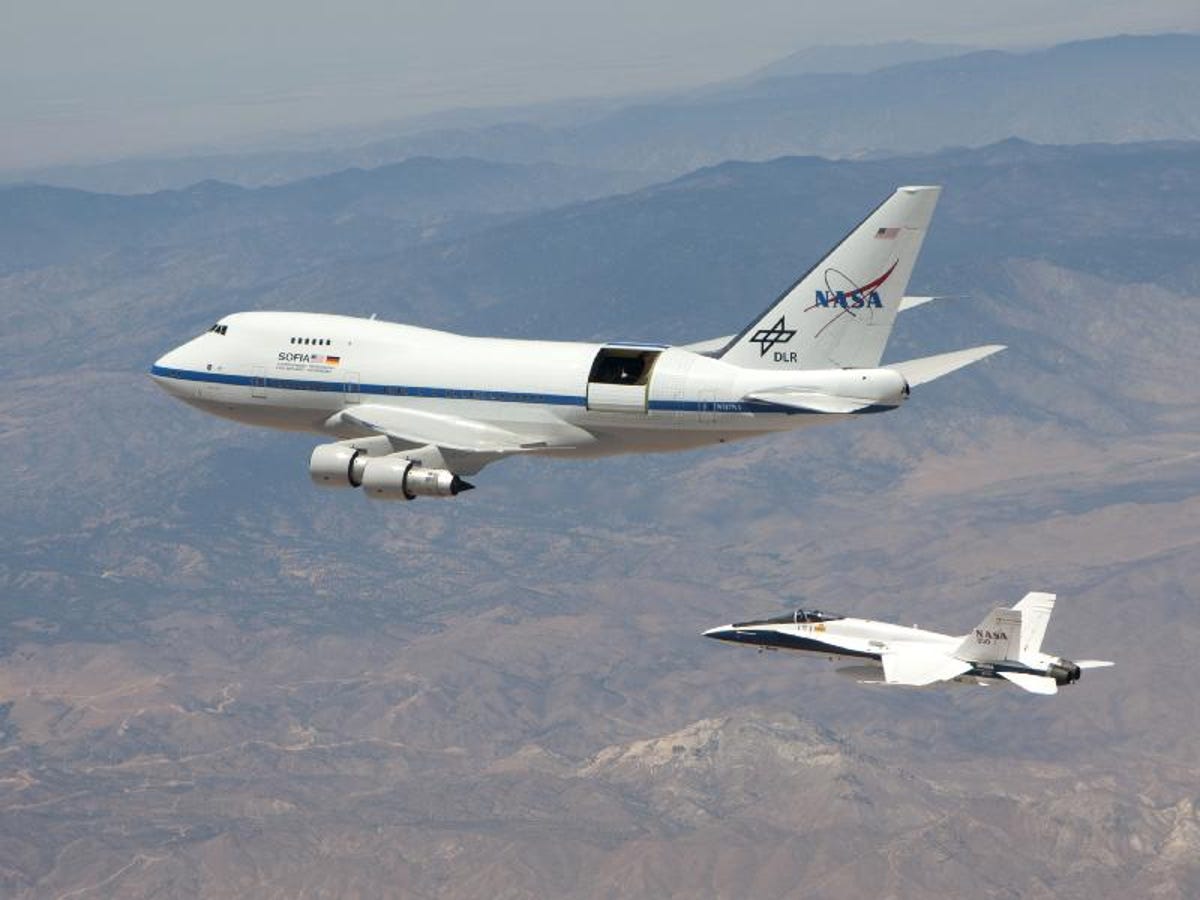SOFIA airborne telescope aims high (photos)
The joint program between NASA and Germany's aerospace agency makes the first flight of its astronomical study missions, with a telescope tucked in the tail of a 747.

SOFIA mission
Between the heavens and Earth, there is the stratosphere. It's that upper layer of the atmosphere that will be the workplace for a 747-based airborne observatory called SOFIA, which made its first science flight this week, in a joint program run by NASA and DLR Deutsches Zentrum fur Luft- und Raumfahrt (German Aerospace Center).
The telescope aboard the highly modified aircraft, NASA says, will give astronomers access to the visible, infrared, and submillimeter spectrums, without having to worry about the atmospheric issues that terrestrial telescopes face. SOFIA stands for Stratospheric Observatory for Infrared Astronomy, which would seem to give an indication of the spectrum that takes priority.

SOFIA's 747SP
The SOFIA aircraft flies in the company of a NASA F/A-18 chase plane during a test flight in August. The telescope looks out of the door behind the left wing; the door/telescope assembly here is rotated to its maximum vertical position of 58 degrees. The 20-ton, German-built telescope has a 2.5-meter (100-inch) diameter.
The 747, acquired by NASA in 1997, made its first post-modification flight in 2007 and its first 100 percent open-door flight a year ago, in December 2009. In its previous life, it first went into service for Pan Am in 1977, and later was sold to United Air Lines.
Orion star formation
Jupiter composite
Galaxy M82
Studying data
After a rehearsal this week for the science flight, Ithaca College professor Luke Keller studies some of the data collected. Keller is a longtime member of the team working on the project's FORCAST instrument--the Faint Object Infrared Camera for the SOFIA Telescope.
In a blog post from just before Thanksgiving, Keller wrote: "Our final test included observations of the Orion Nebula (M42 for you astronomers), a region where stars are forming about 1,500 light-years from Earth. The data look so good that we expect to be able to use them for new astrophysics studies. In other words, SOFIA is ready for astronomy!"
Checking camera alignment
SOFIA workstations
FORCAST
FORCAST, take 2
Cavity door
To see out of the plane, the camera relies on the view from the telescope cavity door at the rear of the fuselage.
In a blog post from mid-November, Keller wrote: "Our flight was about an hour longer than planned due to a minor problem: the telescope cavity door was stuck open (!!) due to a software glitch. Not a problem for the aircraft or pilots, but they had to slow our descent to allow the telescope mirrors to warm up from -37 C (at our cruising altitude of 42,000 feet) to 1 C on the ground. Landing with a cold telescope would have condensed ice on the mirrors, bad news for a $100,000,000 telescope! As soon as we landed, the aircraft operations engineers fixed the problem and closed the door.
"All in a night's work on SOFIA."

